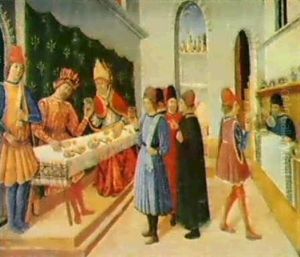Giovanni Boccati Paintings
Giovanni Boccati, also known as Giovanni di Piermatteo Boccati, was an Italian painter who was active during the Renaissance period and is considered a representative of the Umbrian school of painting. His exact birth and death dates are not well-documented, but scholars generally agree that he was born around 1420 and died approximately in 1487.
Boccati's early life remains largely obscure, but it is believed that he was born in Camerino, a small town in the Marche region of Italy. He might have been trained initially in his hometown or nearby regions, developing a style that merged local traditions with the influence of more dominant art centers such as Florence.
During his career, Boccati was primarily known for his work as a panel painter. One of his most notable works is the 'Madonna del Carmine', which displays a combination of Gothic and Renaissance styles, indicative of the transitional period of the mid-15th century. His work is characterized by elegant figures, a rich color palette, and detailed landscapes, often highlighting his skill in depicting both human figures and ornamental motifs.
Boccati's paintings also reflect the influences of other prominent artists of the time, such as Fra Angelico and Filippo Lippi, with whom he might have interacted or whose works he could have studied. His artistry contributed to the dissemination of Renaissance ideals beyond Florence and Rome, helping to establish a more widespread appreciation for this new artistic vocabulary in Italy.
The latter part of Boccati's life was spent working in various towns in Umbria and the Marche, where he left a number of works, though many have been lost or remain unidentified. His influence was felt in the development of the Umbrian school, where he played a role in the transition from medieval to Renaissance art forms.
Despite his contributions, Giovanni Boccati remains a relatively obscure figure compared to his contemporaries. Nonetheless, his surviving works are considered important for understanding the spread of the Renaissance style across Italy and the interplay between regional art forms and the emerging new aesthetic of the period.










